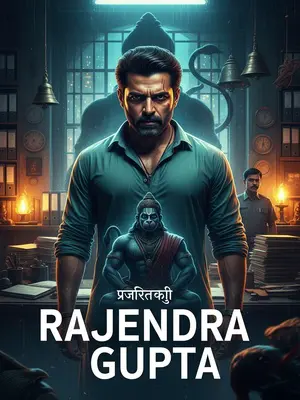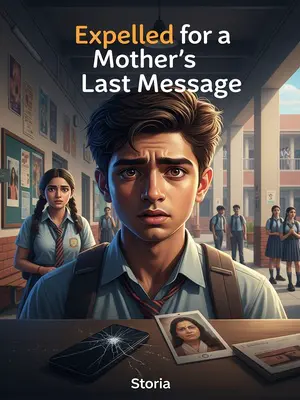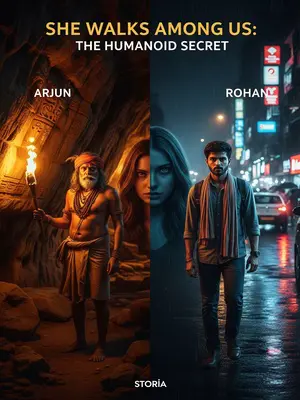Chapter 2: The Digene Comment
Let’s rewind to the last day of 2020.
A biting December chill crept through Delhi’s streets, the air thick with fog and the smell of roasted peanuts. With the pandemic still looming, families prepared to ring in the new year from home.
On 31 December, "Jigyasa Junction" dropped a video: "How Much Did 'Jigyasa Junction' Earn in 2020."
It was meant to inspire, to be transparent. The thumbnail showed Rohan grinning, laptop in hand, rupee signs swirling around him.
Since 2018, Rohan Sharma and his team had made this annual summary a ritual. Fans waited eagerly, parents watched and nudged their kids: “Tu bhi aisa kuch try karega?”
2020’s numbers were staggering: 16.139 million rupees spent, with 9 million on salaries.
People in small towns forwarded the figures to cousins, marveling at how “yeh internet waale log” earned so much.
Within a year, the team grew from 20 to 55—classic startup chaos: cramped desks, late-night Maggi, dreams bigger than the chairs.
Revenue tripled over 2019. The growth curve looked straight out of an MBA textbook.
Even the local dhobi recognized the Jigyasa Junction logo on t-shirts. That’s how deeply they’d entered Indian homes.
And the expansion wasn’t stopping. Whispers of bigger projects, new teams, regional branches filled the air.
Projects like "Basic Operations" and "Drying Factory" had just launched. School principals called about kits, teachers joked about starting their own YouTube channels.
The HR team quipped they’d soon need the whole building. Rohan had already rented more space on the same floor—enough for 150 people.
The once-crowded office now had foosball tables and a proper chai station. The pantry always had Parle-G, and there was talk of putting up a carrom board.
In the video’s comment section, fans cheered: “Proud of you, bhai!” “India ki shaan!” “Ab toh Shark Tank pe jaana chahiye!”
Some fans grew emotional, seeing their own children’s journeys in Rohan’s. It was hope and pride, all rolled into one.
But then, in the midst of celebration, someone dropped a mirchi in the kheer.
YouTube creator "Sailekh" left a comment:
"After seeing this today, I quietly swallowed half a strip of Digene."
It was clever—a true Indianism, laced with envy, sarcasm, and a dose of self-deprecation. Anyone who’d ever overeaten at a shaadi knew the feeling.
Rohan spotted the comment. For a second, he almost laughed—memories of childhood teasing at family gatherings flashed in his mind. But the sarcasm stung. He paused, wondering whether to reply or just move on.
The digital beehive was poked.
Like a neighbour’s sly remark at a wedding, everyone noticed. Replies stacked up faster than monsoon traffic at a Mumbai signal.
Jigyasa Junction’s fans fired back:
“Bhai, you’re just jealous! First do something, then talk about others!” “Trying to get views by dragging Jigyasa’s name? Cheap tactics, bro.”
"You’re just jealous that others are making money."
The classic crab-in-a-bucket syndrome. In India, nobody likes seeing someone else climb.
"Trying to piggyback on their fame? Who do you think you are—‘Jigyasa Junction’ isn’t someone you can just latch onto!"
Memes, jokes, and even angry voice notes flooded the thread. Typical YouTube drama, but with that unmistakable Indian masala.
As the saying goes: “Sar pe kalgi laga ke mor nahi ban sakte, samjhe?” The idiom caught fire, trending on Twitter and WhatsApp alike.
Jigyasa Junction’s 3 million fans could fill an IPL stadium several times over. One comment from each would drown Sailekh in seconds.
Sailekh’s 80,000 followers seemed like a drop in the ocean—Mumbai vs. a hill town. The odds were clear.
And so began a desi internet showdown: an 80,000-follower blogger versus a 3-million-fan juggernaut.
It felt like a Ranji team facing the Indian national side. Everyone watched, popcorn in hand.
80,000 vs. 3 million. The meme wrote itself.
But Sailekh didn’t fold. Amidst the storm, he replied—witty, sharp, self-aware. Some began admiring his guts.
On 24 January 2021, Sailekh fired back with a video: "Filling in the Knowledge Gaps Left by 'Jigyasa Junction.'"
A classic YouTube diss, but loaded with citations and attitude. The thumbnail showed him with a magnifying glass over Jigyasa’s logo.
He called out "little mistakes" in Jigyasa’s videos, each claim backed by sources: government reports, research papers, news clippings.
For example, in "Why Is India’s Table Salt Only Monopolised by the State," Jigyasa said:
"Because of monopoly operations, the government can reap nearly tenfold profits from table salt every year."
Sailekh fact-checked this with graphs and stats. He pointed out what was missing: India’s salt is cheap, high-quality, and disaster-proof.
He argued that Jigyasa’s omission made it seem like the monopoly was only for profit—not public good.
In "How to Scientifically Create Rainfall," Jigyasa cited only India’s weather rockets during the Commonwealth Games—implying artificial rainfall projects were for show. Sailekh countered with ISRO’s cloud seeding and Maharashtra drought relief examples.
In "How to Divorce Scientifically," Jigyasa had edited a legal blogger’s video—Advocate Meera Talks Law—without credit. Her fans noticed and started a mini-campaign. Jigyasa’s silence only worsened things. In India, public apology restores izzat—remaining quiet is a bigger sin.
A year later, when Advocate Meera joined YouTube, Jigyasa finally apologised. By then, the damage was done. People remembered.
They even tried to piggyback on Advocate Meera—pretending a feathered stick was a peacock. The idiom exploded into memes.
At the end of his video, Sailekh declared:
"Jigyasa Junction" is clearly pushing their own agenda, harbouring ulterior motives, and their stance is crooked.
He ended in classic Hinglish: “Bro, ye sab agenda hai. Science mein bias nahi chalega!”
The video went viral. By evening, even the neighborhood paanwala was debating Sailekh’s video with customers. It was that viral.
Family WhatsApp groups buzzed with forwarded messages. One uncle sent a voice note: "Beta, Jigyasa Junction ne toh poora desh educate kiya hai, ab yeh naya ladka kya bol raha hai? Hum toh uske side mein hain."
Influencers reposted it. The country watched as comment sections erupted.
Replies stacked up like traffic at a Mumbai signal.
Some debated with science and logic. Others just flung drama: “Tu hai kaun, bro? Jigyasa Junction ne pura desh educate kiya hai!”
Jigyasa fans called Sailekh a clown, hungry for attention. Memes compared him to reality TV contestants—always fighting, never happy.
Sailekh’s supporters claimed Jigyasa’s videos were selective, even misleading. Screenshots and timestamps became digital ammunition.
Jigyasa’s loyalists argued Sailekh had cherry-picked a few mistakes, ignoring Jigyasa’s massive contribution.
Old fans posted montages of their favourite Jigyasa moments. Sailekh’s crowd replied: "Yahi toh problem hai, yaar. Bachche jo dekhenge, wohi sikhenge!"
Arguments got heated—sometimes personal. "Tube light" became the new insult: stubborn, slow to get the point. "Arey, chill maar yaar! Sabko milke seekhna chahiye, not fight like this," someone posted, earning a stream of laughing emojis.
#DigeneDebate and #ScienceKiLadai trended, with Bollywood villain GIFs everywhere.
It was no longer about science. It was about egos, fandoms, and Indian pride.
People across the country watched, popcorn in hand, as this war of words raged on, not realising it was just the beginning of something much bigger.











